#medieval venice
Text

A knight's tomb. Santa Maria Gloriosa dei Frari, Venice
#knight#venice#venezia#italy#tomb#sarcophogus#original photography#photography#taphophile#taphophilia#lensblr#photographers on tumblr#cemetery#medieval#urbanexploration#wanderingjana
94 notes
·
View notes
Text
IT'S TIME YOU ALL HEARD ABOUT MY GIRL ARCANGELA TARABOTTI, SALTIEST NUN IN CHRISTENDOM

So, I first heard about Arcangela Tarabotti while I was doing the study for my novella THE CITY BEYOND THE GLASS, which is set in Renaissance Venice and inspired by a real historical practice: At one point during the sixteenth century, nearly sixty percent of all the noble women in Venice lived in convents. And the vast majority of them were there against their will.
For complex dynastic reasons (or basically…money and prestige), only one son and one daughter in each generation of Venetian noble families were permitted to marry during this period. The remaining sons resorted to the famous Venetian courtesans to find the companionship which was denied them in marriage, while the spare daughters were locked into convents. The system was unsustainably wasteful and had to be abandoned within a few generations, but by that time it was already too late - many of the old patrician families of Venice were already going extinct. (You can read more on this in Jutta Gisela Sperling’s book Convents and the Body Politic in Late Renaissance Venice).
While it lasted, the system had plenty of opponents. In 1619, Patriarch Giovanni Tiepolo said, "More than two thousand patrician women…live in this city locked up in convents as if in a public tomb. …They are noblewomen, raised and nurtured with the highest delicacy and respect so that if they were of the other sex, they would command and govern the world."
Even when they have suffered oppression, women throughout history have challenged the status quo, and the women of Venice were no different. Arcangela Tarabotti is the foremost example.
Arcangela was just 11 years old when her father sent her to the convent of Sant'Anna. He considered her to be unmarriageable because she had a physical disability, which she had in fact inherited from him. She would spend the rest of her life there, taking vows as a nun in 1623…a fact about which she was in a white-hot fury.
"Why, then, do you defy the works of the Most Just One by decreeing that many women should live all together, alike in dress, dwelling place, food, and conduct, when the Lord of Lords makes it a miracle of His infinite wisdom for all things He created to be different? Why do you want to bend to your whim contrasting wills created so by nature? It is nothing less than wanting to change and correct the deeds of a Creator who cannot err."
During her early years in the cloister, Arcangela gained a reputation for rebellion and outspokenness. At one stage, it took a direct command from the Patriarch himself to force her to cut her hair. Despite this, Arcangela was able to access a high standard of education at the convent and became a philosopher and writer, corresponding with an impressive network of the thinkers of her day. She wrote multiple works critiquing the misogyny entrenched in Venetian society - including a scorching expose titled Paternal Tyranny.
“Only hell itself bears a likeness to the suffering of these enforced slaves of Christ," Arcangela wrote concerning the Venetian women imprisoned in nunneries. "Over the gate of Hell, Dante says, are inscribed the words ‘Abandon every hope, who enter here.’ The same could be inscribed over the portals of convents.”
Contrary to the polemicists of her day, Arcangela maintained that women were fully equal to men and even argued that they should be able to become lawyers and judges. "Both male and female were born free, bearing with them, like a precious gift from God, the priceless bounty of free choice. If in God’s eyes woman is not less privileged than you with respect to her physical or spiritual qualities, why do you wish her to seem created with such great inequality, you enemies of the truth, proclaiming her to be subject to your impulsive, mad whims? In short, woman is deserving of less respect than you only when you have reduced her to this state by your scheming."
"When women are seen with pen in hand, they are met immediately with shrieks commanding a return to that life of pain which their writing had interrupted, a life devoted to the women's work of needle and distaff," she argued.
Tarabotti maintained that she did not condemn all men simply for being men: "Stricken by a guilty conscience, some men will say that I speak with excessive temerity about all men in general. They are greatly mistaken. If they behave justly, they will be protected from my attacks and those of others. I separate the just from the wicked (who are the subject of my discourse), since not all men are bad and not all women are good."
As a keen amateur historian, I’m accustomed to wincing when people assume that all women living before about 1920 were ignorant, oppressed, and unable to inherit or control property (as if world history was not long and diverse and filled with creative, bold, and influential women). For a limited time during the Renaissance, however, things really were incredibly bad for Venetian women. To find out more about Arcangela and her times, I highly recommend Letizia Panizza's translation of PATERNAL TYRANNY, published in 2004 by the University of Chicago Press!
#history#renaissance history#venice#venetian history#women's history#renaissance women#historical fiction#renaissance#17th century#1600s#medieval women#women in history#feminism
313 notes
·
View notes
Text



Tod Cutler – Italian 14th to 15th Century War Hammer – Dragon Hammer
This Italian medieval war hammer is based on a piece from the Venice Museum dated 1380. Housed at The Museo Civico Correr in Venice, Italy. Francesco II da Carrara. The original was a staff weapon at 20cm wide and this has been scaled down to be a hammer. War hammers generally had a faceted hammer for powerful concussive blows and a sharper pointed side which could be used for piercing and puncturing. Based on a piece from Venice Museum and dated 1380 . The head is cast bronze and steel and matched with a bronze end cap and all the components are securely fitted to a stout and robust ash hardwood haft.
War hammers generally had a faceted hammer for blows and a sharper pointed side which could be used for piercing/ripping.
#Kult of Athena#KultOfAthena#New Item Wednesday#Tod Cutler#Italian 14th to 15th Century War Hammer#Dragon Hammer#War Hammer#War Hammers#Weapon#weapons#Italian Weapons#Italian War hammers#Medieval War Hammers#Medieval Weapons#Venice Museum#Museo Civico Correr#Francesco II da Carrara#14th century#15th century#Battle Ready
51 notes
·
View notes
Note
Do we know anything about the historical context that allowed Venice to come up with something like the Arsenal? Most accounts kind of treat it as this de Novo idea to mass produce ships, but I feel like history never actually works like that, and Carthaginians were doing that 1,500 years earlier. Were there trends going on elsewhere in Europe and the Mediterranean world that contributed to this industrial breakthrough? Do we know anything about the specific administrators who had to plan this seeming quantum leap in production out? Did a bunch of folks immediately see what the Venetians were doing and copy it? If not, why?
I'm going to take a slightly broader take on this question: the assembly line is not an invention, it's a discovery. So it's not about who did it first, because you have lots of cases of independent discoveries happening in wildly disparate times and places.
I remember quite vividly a talk given by Professor Anthony Barbieri-Low when he first arrived at UCSB, where he argued that the assembly line was first discovered in China...during the Bronze Age. As early as the Shang and Zhou dynasties around 1000 BCE, we have evidence of assembly line techniques being used in the production of bronze and pottery, because the pieces were inscribed on the bottom with indications of which worker did which parts of the process and which quality inspector signed off on the piece as good enough for sale - so that if the thing broke, officials could figure out exactly who to blame for shoddy work.

So it's not that Venice was the first to ever adopt the idea of assembly line manufacture of ships, but rather that they did it more consistently and devoted more resources to it than anyone else, and iteratively improved on the techniques to get production times down to a single day per galley.
The Arsenal of Venice was an enormous complex, roughly 15% of Venice's landmass, surrounded by a two-mile long defensive wall, and employing some 16,000 people. In addition to standardized pre-fabricated parts, the Arsenal also emphasized division of labor with workshops devoted to producing everything a warship might need in-house - rope, rigging, masts, planking, sails, nails, guns, etc. Organizing these supply chains, what we might call vertical integration, was an incredible logistical feat in and of itself.
In terms of technology, the Arsenal pioneered frame-first (as opposed to hull-first) construction, a moving assembly line whereby galleys were floated down a canal to different stages of the production process, new forms of firearms, and new kinds of ships llike the galleass and galleon. Galileo was a major consultant to the Arsenal at the height of its power.
In addition to the technical advancements, all of this required a lot of money - roughly 10% of the Republic's entire budget - and what made Venice truly unique was its ability to devote those kind of resources on a regular basis at a time when even powerful empires like the Ottomans and the Spanish were still using the yo-yoing methods of medieval fleet construction.
#history#economic history#ancient history#renaissance history#arsenal of venice#galley#ships#medieval navy#royal navies#royal fleets#military history#naval warfare
65 notes
·
View notes
Text
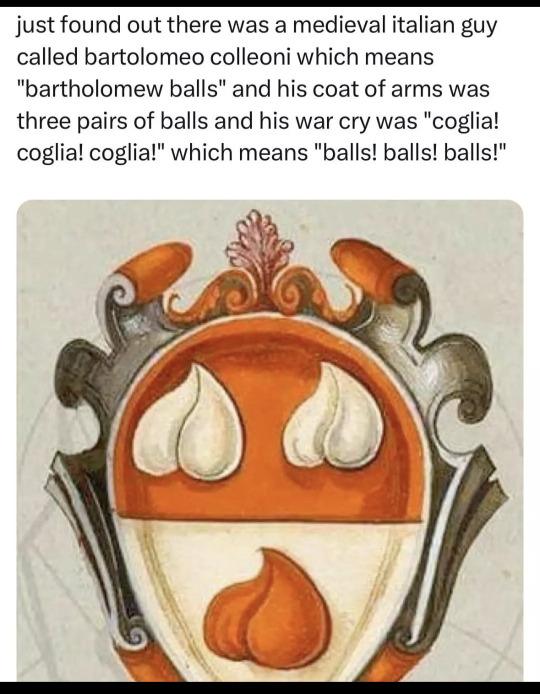

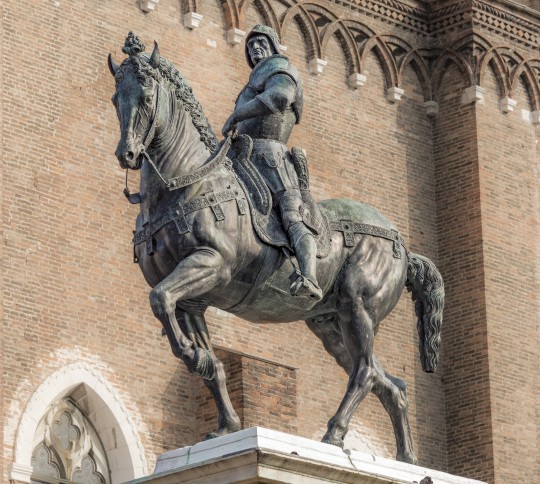
He was highly regarded both during his lifetime (mostly) and after by the folks in Venice. On his death he left money to fund Venice's war with the Turks and to build a cool statue of him on a horse (which the Venetians actually did rather than just pocket the money and spend it on masks, fish, and pepper).
13 notes
·
View notes
Photo

A velvet covered Barbute decorated with a brass crest, Venice, Italy, 15th century with 17th century decorations, housed at the Palazzo Ducale, Venice.
#armor#armour#helmet#barbute#europe#european#italy#italian#venice#venetian#medieval#middle ages#renaissance#early modern#palazzo ducale#art#history
359 notes
·
View notes
Text
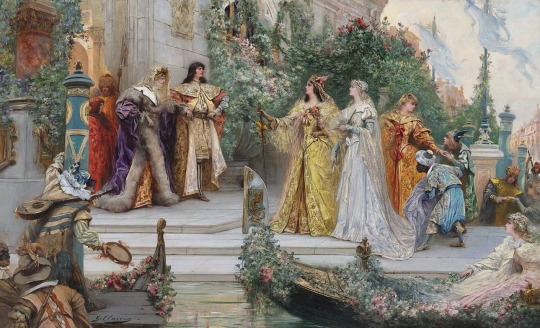
The Arrival of the Guests, Venice by Georges Clairin
#georges clairin#art#venice#history#europe#european#northern italy#italy#venetian#renaissance#medieval
83 notes
·
View notes
Text
LA PALA D'ORO DE SAN MARCOS: LA JOYA MÁS GRANDE DEL MUNDO
THE PALA D'ORO OF SAN MARCOS: THE WORLD'S LARGEST JEWEL

This jewel (I don't mean Mishima) has remained hidden for centuries, because it was not shown to the parishioners on a daily basis, but was hidden behind other works of art and was only revealed at certain celebrations by means of a hidden mechanism.
Esta joya (no me refiero a Mishima) ha permanecido oculta durante siglos, porque no se mostraba de modo diario a los feligreses sino que quedaba oculta detrás de otras obras de arte y sólo se descubría en determinadas celebraciones mediante un mecanismo oculto.

La pala d'Oro cuando se muestra en festividades especiales frente a los fieles mediante un mecanismo de giro. Foto: Gérard, CC BY-SA 4.0, via Wikimedia Commons
The pala d'Oro when it is displayed on special festivities in front of the faithful by means of a turning mechanism. Photo: Gérard, CC BY-SA 4.0, via Wikimedia Commons.

La pala d'Oro oculta tras el retablo de Maffeo da Verona del s. XVII
The pala d'Oro hidden behind Maffeo da Verona's 17th century altarpiece

El retablo es inmenso: 3 metros de ancho por 2 metros de alto de oro y plata dorada; 187 placas de esmalte; 1.927 gemas: 526 perlas, 330 granates, 320 esmeraldas, 255 zafiros, 183 amatistas, 175 ágatas, 75 rubíes, 34 topacios, 16 cornalinas, y 13 jaspes ¡Todo un gigantesco joyero!
The tableau is immense: 3 metres wide by 2 metres high in gold and silver gilt; 187 enamel plates; 1,927 gems: 526 pearls, 330 garnets, 320 emeralds, 255 sapphires, 183 amethysts, 175 agates, 75 rubies, 34 topazes, 16 carnelians, and 13 jaspers . A gigantic jewellery box!
(Español / English)
La Pala d'Oro permaneció ocultada celosamente durante 900 años a casi todas las miradas, lo que alimentó la imaginación colectiva con extrañas historias sobre lo que contenía, inclusive se creyó que era una puerta de conexión con el más allá o que tenía tal fuerza espiritual, que quien lo miraba, se convertía al catolicismo.
Y es que la Pala d'Oro se ocultaba entre dos retablos pintados que cubrían ambos lados y la encerraban con catorce cerrojos como una caja fuerte protectora.
Han llegado hasta tres retablos pintados que lo protegieron, de diferentes épocas. Dos de ellos se pueden admirar en el Museo de la Iglesia de San Marcos: el más destacado, pintado por Paolo Veneziano del siglo XIV, y el más reciente, obra de Maffeo da Verona del XVII. El tercero, atribuido a Francesco de’ Franceschi, del siglo XV que está en el prebisterio.
En la actualidad, puede admirarse en cualquier momento, pagando un suplemento adicional se accede desde la derecha del altar mayor. Y os aseguro, que merece la pena ver esta gran joya medieval.
***
The Pala d'Oro remained jealously hidden for 900 years from almost all eyes, which fed the collective imagination with strange stories about what it contained, including the belief that it was a gateway to the afterlife or that it had such spiritual power that those who looked at it were converted to Catholicism.
The Pala d'Oro was hidden between two painted altarpieces that covered both sides and enclosed it with fourteen locks like a protective safe.
Three painted altarpieces from different periods have survived to protect it. Two of them can be admired in the Museum of the Church of San Marco: the most important, painted by Paolo Veneziano in the 14th century, and the most recent, by Maffeo da Verona in the 17th century. The third, attributed to Francesco de' Franceschi, dates from the 15th century and is in the prebistery.
Nowadays, it can be admired at any time, and for an additional fee it can be accessed from the right of the main altar. And I assure you, it is well worth seeing this great medieval jewel.
Source: venecisima.com
#venice#venezia#venecia#san marco#pala d'oro#medieval jewel#joya medieval#arte bizantino#byzantine art
3 notes
·
View notes
Photo
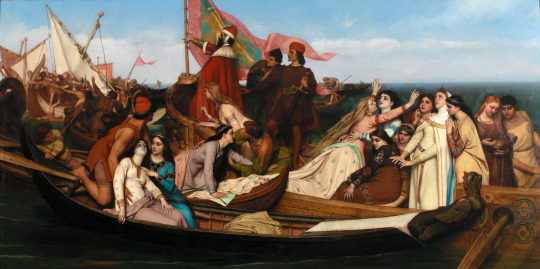
Jozef Van Lerius (Belgian, 1823 - 1876)
Brides of Venice, 1871
Smithsonian American Art Museum
#Jozef Van Lerius#best quality online#belgian#belgium#brides of venice#art#fine art#fine arts#classical art#beautiful women#medieval#women#europe#european art#europa#venice#italy#mediterranean#traditional art#public domain#oil painting
34 notes
·
View notes
Text

Asolo Italy
#original photography#photographers on tumblr#italy#veneto#architecture#travel#venice#my photography#original photographers#medieval#italian architecture#kiss#love
9 notes
·
View notes
Text
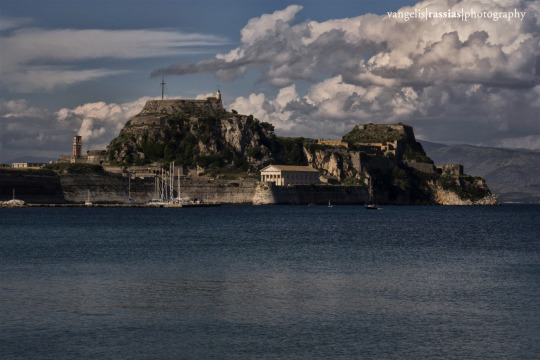
@kerkyra.corfu.island castellovecchio 2016
O περιφημος βράχος τωνν ''Κορυφών'' βρισκεται αναμεσα σε δύο μεγαλοπρεπείς κόλπους.
Τον κόλπο της Γαρίτσας και των Γουβιών.
Βυζαντινοί,Φραγκοι,Ανδεγαυοι, Βενετοι, Γαλλοι,Ρώσσοι,Γαλλοι και Αγγλοι μεχρι το ''δώρο''στον Βασιλια Γεώργιο,για το μικρό Βασίλειο της Ελλάδας...
Το απανθησμα της οχυρωματικής τεχνης της Γαληνοτάτης Δημοκρατίας της Βενετίας 15-18ος αιώνας και Αγγλικής Αυτοκρατορίας αρχες 19ου αιώνα...
Αγαπημένο...
#sonyrx10
From my project ''Chateaux Forts de Grece''.
In 2006 the fortresses were exhibited at the Byzantine Museum, '' Byzantines Fortress in Greece'' then, in 2007 the French Embassy in Athens undertook major exhibitions on the ''Fortresses of Greece''-''Chateaux forts de Grece'' in Rhodes, Kalamata, Patras, Athens, Nafplio.
#corfuisland#castellovecchio#history#medieval#venice#england#britishempire#fortress#byzantine#francish#anjoudynasty#historical#architectural#greece#ioniansea#ionianislands#perspective#castle#travel#architecture
3 notes
·
View notes
Text


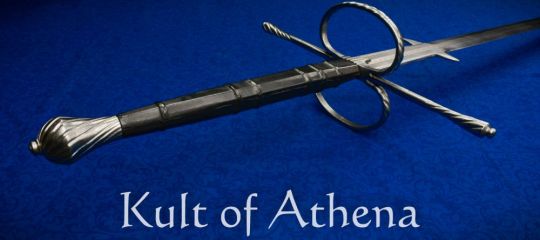
Del Tin 16th Century Venetian Two-Handed Sword
The Two-Handed Sword is often thought to be a medieval death instrument relegated to a more brutal age and it was to be superseded by more gentlemanly weapons in a more civilized time. Patently untrue, Two-Handed Swords saw their greatest use in the Renaissance. Many Renaissance fighting masters taught the Two-Handed Sword as a battlefield weapon of weight, able to use its mass not only to deal devastating damage, but also to use its size as a defence. These swords would develop progressively longer crossguards, a guarded ricasso and hilt rings, all designed to deflect and entrap the foes weapons. With its durability and mass, the Great Sword could withstand the shock of dealing with any battlefield weapon. The Masters of the these swords innovated surprisingly complex fencing techniques for two handed swords, proving them to be a weapon of finesse beyond raw brutality with a technique focused on footwork, entrapment and counter attack.
This Venetian example is a true-two handed sword. Massive in size, swords of this scope were often used to break apart tightly-knit pike formations – brave souls would wade between the forest of pikes and knock their long-hafted weapons aside with strong, broad sweeping strokes to create a break for other infantry or another pike formation to take advantage of
Crafted by Del Tin of Italy, the unsharpened blade has been ground from Chrome-Vanadium steel and tempered to a Rockwell Hardness of 50. The grip is covered with form-fitting black leather and the hilt fittings are of cast steel. The sword comes unassembled, requiring the crossguard, grip and pommel to be fitted over the swords tang and held into place with a pommel nut tightly screwed over the tang end.
#Kult Of Athena#KultOfAthena#Del Tin#New Item Wednesday#16th Century Venetian Two-Handed Sword#sword#swords#weapon#weapons#blade#blades#Two Handed Swords#European Swords#European Weapons#Venice#Italy#Italian Swords#Italian Weapons#Medieval Swords#Medieval Weapons#16th Century#Renaissance Swords#Renaissance Weapons
9 notes
·
View notes
Text

VENICE
13 notes
·
View notes
Photo

When we think of Romania, one name comes to mind: Vlad the Impaler, but there was a man before him, his father, Vlad the Dragon, who fought to get Wallachia back. #gothicbitemagazine #gothic #bite #magazine #gbm #goth #romania #transylvania #hungary #vladii #vladtheimpaler #history #middleages #italy #venice #constantinople #assassinscreed #wallachia #medieval #neorenaissance #ottoman LINK: https://gothicbitemagazine.ca/2022/12/19/before-the-birth-of-vlad-the-impaler-there-was-his-father/ https://www.instagram.com/p/CmXJdgHvHUx/?igshid=NGJjMDIxMWI=
#gothicbitemagazine#gothic#bite#magazine#gbm#goth#romania#transylvania#hungary#vladii#vladtheimpaler#history#middleages#italy#venice#constantinople#assassinscreed#wallachia#medieval#neorenaissance#ottoman
13 notes
·
View notes
Text

#basilica#basilica San Marco#venice#middle ages#medieval#gold#medieval basilica#architecture#arch#mosaic
3 notes
·
View notes